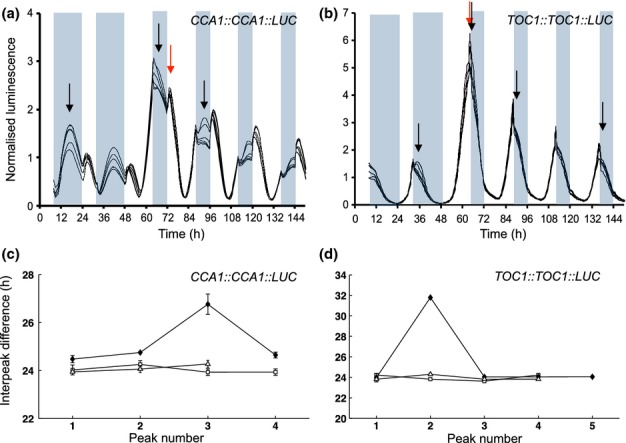Fig 1.

Ostreococcus tauri core circadian markers respond quickly to photoperiod transitions. O. tauri cells expressing constructs of CIRCADIAN CLOCK ASSOCIATED 1 (CCA1) or TIMING OF CAB 1 (TOC1) tagged with the marker gene LUCIFERASE (LUC) were entrained under 8 : 16 h, light : dark cycles (short days, SD) and imaged for 2 d: (a) CCA1::CCA1::LUC; (b) TOC1::TOC1::LUC. At 48 h, photoperiod conditions were switched to 16 : 8 h, light : dark cycles (long days, LD). All traces are normalized to the average of each time series and then averaged across eight replicate cultures. Red arrows highlight acute responses to light; black arrows denote circadian peaks. Interpeak differences between circadian peaks were calculated for SD (open squares), LD (open triangles) and SD to LD (closed diamonds) photoperiod conditions, for CCA1::CCA1::LUC (c) and TOC1::TOC1::LUC (d). White (day) and grey (night) shading represent the photoperiods in (a) and (b), respectively.
